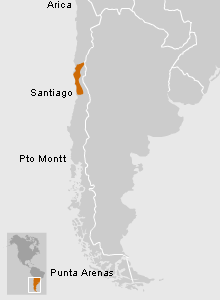In artistic terms, the Diaguita are known above all for their distinctive ceramics, which feature two-colored geometric designs applied on a base of a third color. This kind of decoration is found on a variety of vessels they produced, such as pots, urns, duck-shaped pitchers, and bowls. The Diaguita’s highly complex designs are thought to be representations of shamanic visions; many of their vessels bear feline motifs or people with feline features. Apart from ceramics, the Diaguita also produced some of the geometric designs and mask forms found in the rock art of the region.
How to Arrive
El Museo se encuentra ubicado en pleno centro de Santiago, en la esquina de las calles Bandera y Compañía, a una cuadra de la Plaza de Armas.
Tickets
Chileans and resident foreigners: $1,000 Foreigners: $8,000 Chilean students and resident foreigners: $500 Foreign students: $4,000
Guided Visit
El Museo cuenta con un servicio de guías, sin costo adicional, para los establecimientos educacionales.
Information for Teachers
Invitamos especialmente a coordinarse con alguno de nuestros guías para programar una visita o actividades de motivación y seguimiento que aprovechen de la mejor forma la experiencia de visitarnos.
Audioguides
Download recordings of the Permanent Exhibition display texts in English, French, Portuguese and Spanish here. These audioguides are in mp3 format and are arranged by cultural area, following the same order as our exhibit galleries. Descargue desde esta página audioguías en castellano, inglés, francés y portugués con los textos de las vitrinas de la […]










































